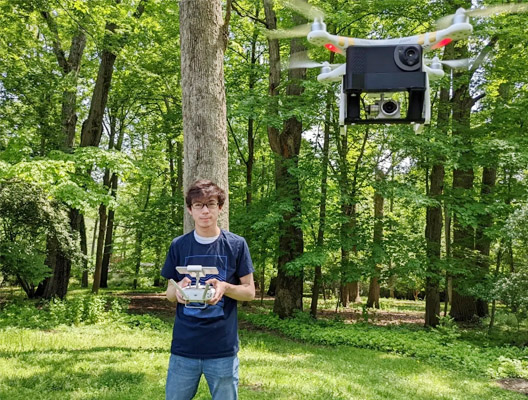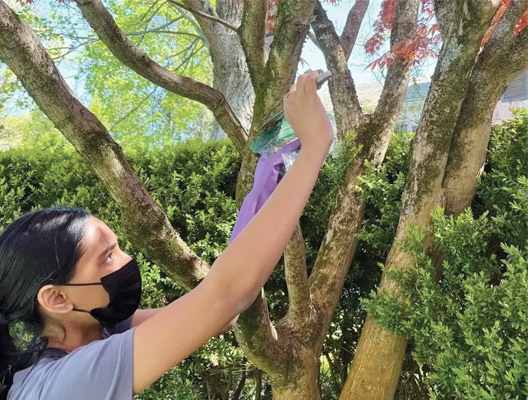Lanternfly Egg Detector By Princeton Teen Aims To End Menace



Two students from Princeton International School of Mathematics & Science have prevented over 30,000 spotted lanternfly eggs from hatching.
PRINCETON, NJ — As temperatures warm up in New Jersey, the invasive spotted lanternfly eggs are expected to hatch, with the first instar nymphs appearing in May. At times the spotted lanternfly eggs can be invisible or difficult to spot.
But two students from Princeton International School of Mathematics and Science (PRISMS) have prevented approximately 30,000 spotted lanternfly eggs from hatching in the Princeton area.
Joseph Miller, a junior at PRISMS is using a DJI drone carrying a seek shot thermal camera to locate clusters of the spotted lanternflies in the area.
"The camera uses infrared to figure out how hot things are. The spotted lanternflies are a bit hotter in their environment as they're alive. So, they show up as white splotches on the background of trees," Miller said.
Once these clusters are identified, the students help destroy them by scraping and spraying.
Miller, 17, noticed the spotted lanternflies last summer and decided to start detecting them. With his interest in robotics, last fall Miller began working to use a DJI drone equipped with a thermal camera to detect the spotted lanternflies.
He then approached Sreya Jonnalagadda, a senior at PRISMS, who has been working on using a geographic information system to predict and understand the spotted lanternfly infestation in vineyards.
Together, Miller and Jonnalagadda decided to look for and remove spotted lanternfly eggs before they hatch. The students initially reached out to the mayor's office to enquire about groups who were interested in removing the spotted lanternfly eggs. When they found that no such group existed, they put out fliers across the community.
And they received quite a number of responses.
The students have so far visited over 40 different properties in the community, and have helped detect and remove spotted lanternflies. "We've prevented approximately 30,000 eggs from hatching by scraping and spraying," Miller said. "It has been an amazing experience to interact with the Princeton Community and to teach them how to recognize and remove the egg masses."
While Miller flies the drone, Jonnalagadda is using a map modeling to find areas of potential infestation, through a geographic information system. "One of the crops they infest the most is in vineyards. I use different variables like highlight temperature and growth suitability of the grapevines, and then overlapping that with the spotted lanternfly quarantine areas to locate clusters," Jonnalagadda said.
Currently, Miller is still trying to figure out how to use an object detection algorithm to count the lanternflies. "So I don't have to go through the images by hand and count them. I plan to make a map. For example, I could fly over a farm and then map which trees have the most eggs, so we could target those for traps," he said.
Miller is being mentored by Adam Kemp, director of the STEAM Department and Engineering teacher.
"Our school is very STEM-focused, and we spend a significant amount of time teaching students how to conduct research projects like this," Kemp told Patch.
"Joe is in my engineering research and Sreya is in biology research. But the two disciplines are so closely linked that they've been able to work with each other to help build up a project that is usually greater than one wants to be able to do."
With the students finding success with their project, Kemp hopes they continue their work in the future.
Jonnalagadda is headed to Cornell University this fall and Miller will be attending RSI, a research program at MIT this summer. "We hope to continue learning to expand our research and aiding our community to combat this invasive species," Miller said.
Residents who wish to aid the students in their research, and who want them to help identify spotted lanternfly egg clusters in their yards can contact SLFResearch@prismsus.org